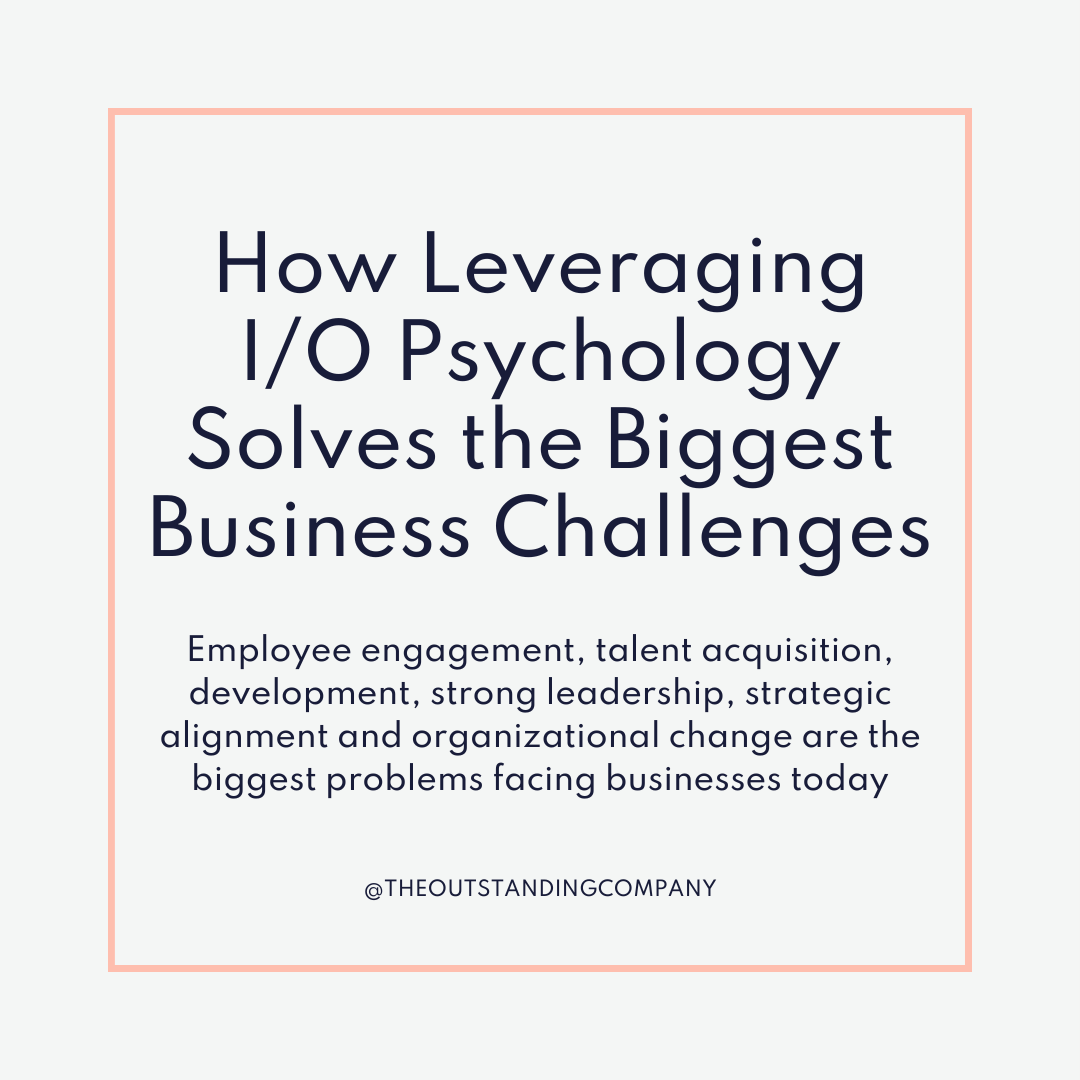How Leveraging I/O Psychology Solves the Biggest Business Challenges
When you follow the latest trends in human resources, you can’t predict how they’ll impact your business. Hundreds of trillions are wasted each year because of this. And the problems get worse.
Leveraging research in I/O psychology, you can actually predict results.
One engagement survey we use has led to an average 40% increase in employee engagement, 49.6% higher total shareholder value, and 30% higher customer satisfaction, with long lasting results.
by Natalie Grogan, CEO of The Outstanding Company
Maintaining a productive, engaged, and efficient workforce is a monumental task these days. The most powerful untapped resource you can leverage is Industrial/Organizational (I/O) Psychology.
I/O psychology is the intersection of business and psychology. There is a wealth of research on nearly every issue at work, both old and new, to help you avoid making decisions about hiring, managing, development, retention, and performance that have already proven to fail.
At The Outstanding Company, we utilize I/O psychology to help businesses solve big problems that often seem to be unsolvable through trial and error. Every business problem leads back to people in some way, and that is where the change must happen.
1. Driving Employee Engagement:
An engaged workforce is more productive, innovative, and dedicated. Driving employee engagement can be challenging and organizations waste hundreds of millions a year on failed engagement initiatives. Using I/O psychology, we delve into intrinsic and extrinsic motivators, creating an environment that promotes personal growth, recognition, and satisfaction. This approach goes beyond surface-level engagement strategies, providing lasting improvements in productivity and wellbeing.
Using research and evidence-based practices from I/O psychology, we can predict results rather than try to reinvent the wheel. In fact, I/O psychology research tells us that many of the ‘popular’ or ‘creative’ employee engagement tactics, initiatives, and software out there today do more harm that good in the long term.
Harvard Business Review says that HR has an “adrenaline shot” problem: employee engagement is poor so they come up with some new shiny idea – the adrenaline shot. Engagement scores go up, then quickly drop. Do this enough times and your employees see right through it, becoming more disengaged because of the obvious manipulation.
Using I/O psychology, we develop long-term, sustainable solutions to employee engagement. We measure your current employee engagement scores, develop an action plan to improve them based on your unique values, and train managers on how to understand and improve their teams’ scores.
2.Targeted Talent Acquisition and Development:
The costs of a bad hire can be staggering, not only in monetary terms but also in terms of team morale and productivity. I/O psychology offers a solution. With evidence-based tools such as the Predictive Index, we can assess personality and cognitive abilities, and create accurate behavioral and cognitive models for jobs. This ensures you’re not just filling a position, but strategically placing the right candidate where they can excel and where they’ll want to stay for a long time.
Personality and cognitive assessments should only be used in hiring if you are comparing the results to the needs of the role, agreed upon by multiple stakeholders. Otherwise, you are just guessing at what the role requires and bias is very likely.
For example, if you give a candidate a DiSC assessment and the person is an INTJ but you think people who are introverted are not good at the particular job, you are just guessing. You have no data to prove that.
If you administer a Job Assessment from Predictive Index that shows your ideal candidate is high in extroversion based on the day-to-day requirements of the role, and gain agreement from stakeholders close to the role, you now have a legally defensible reason for hiring someone with high extroversion.
First, you need to understand and agree upon the needs of the role. Then, you can assess candidates against those needs. The same process works for employee development and coaching in their existing role. When you understand the differences between the candidate or employee’s behavioral style and the role, you can better predict on the job performance and coach that person in areas that don’t come naturally.
3. Building Stronger Leadership:
Great leaders inspire their teams, driving them towards common goals. However, developing these leaders requires a nuanced understanding of their own and their employees’ strengths and weaknesses and how those interact with what the leader is tasked with accomplishing. By applying I/O psychology principles, we can create personalized development plans that enhance strengths and address weaknesses, fostering transformational leadership that motivates and empowers.
Developing self-awareness, leaders can better manage their interactions with others and learn what skills they need to develop. Learning about team members helps them become better at managing team members to perform at their best. When you are able to understand how people generate and value ideas, communicate, the work environment they prefer, how they manage risk, and other important business elements, you can bring out the best in their performance.
4. Achieving Strategic Alignment:
Ensuring that every team member is working towards the same strategic objectives is critical to organizational success. I/O psychology provides insights into employee behaviors, motivations, and work styles, enabling us to align teams effectively. This not only improves productivity but also boosts morale as employees understand how their contributions fit into the larger organizational picture.
Alignment on a team has two fundamental elements: alignment to each other and alignment to their share goals. Using I/O psychology we help team members learn about how to best communicate with each other. We resolve conflict by understanding this as well as differences in how they view risk, whether they are independent or collaborative, and whether their team members are proactive or responsive. These are the foundational reasons that team members have conflict and are easily resolved once you understand them.
The other element is how the team as a whole aligns to their strategic initiatives. All strategic initiatives fall into one of 4 categories: innovation + agility, results + discipline, process + precision, and teamwork + employee experience. All behavioral profiles also fall into one or two of these categories.
Because of this, we have the ability to see how team members align to strategy. If all team members are in innovation + agility, but our strategy is all focused on process + precision, we’re going to have a problem achieving our goals. Without knowing this, we would find out the hard way – by failing. When we have this psychometric data, we can predict upcoming challenges and get ahead of them to achieve our goals.
5. Navigating Organizational Change:
Change is a constant in the business world. Whether it’s adapting to new technologies, restructuring teams, or shifting market dynamics, organizations need to be agile. Through I/O psychology, we can better understand how employees react to change and implement strategies to reduce resistance, foster resilience, and maintain productivity throughout periods of transition.
Another work-related aspect of human behavior is how people handle change. When planning major organizational change, you can predict how people will react and manage it ahead of time, before suffering backlash. Some people thrive in changing environments – they find change exciting and are also drivers of change. Others prefer things to stay steady but can still manage change well if they understand the ‘why’ behind it, and have ample notice.
Organizational change often impacts structure, roles, employment status (layoffs/reductions), etc. Using I/O psychology, you can more strategically prepare for those scenarios and more seamlessly implement change. I/O psychology focuses on how to design organizations and jobs based on the needs of the business and its resources as well as how to align the right people and teams to those needs. This is how you successfully accomplish doing more with less.
At The Outstanding Company, our goal is to help businesses navigate these common pain points and foster a thriving, engaged, and productive workforce. We would be happy to explore how we can tailor our I/O psychology-based solutions to your unique business needs.
Reach out to us for a free consultation to start addressing your business challenges with evidence-based methods that create predictability and long-lasting results.


